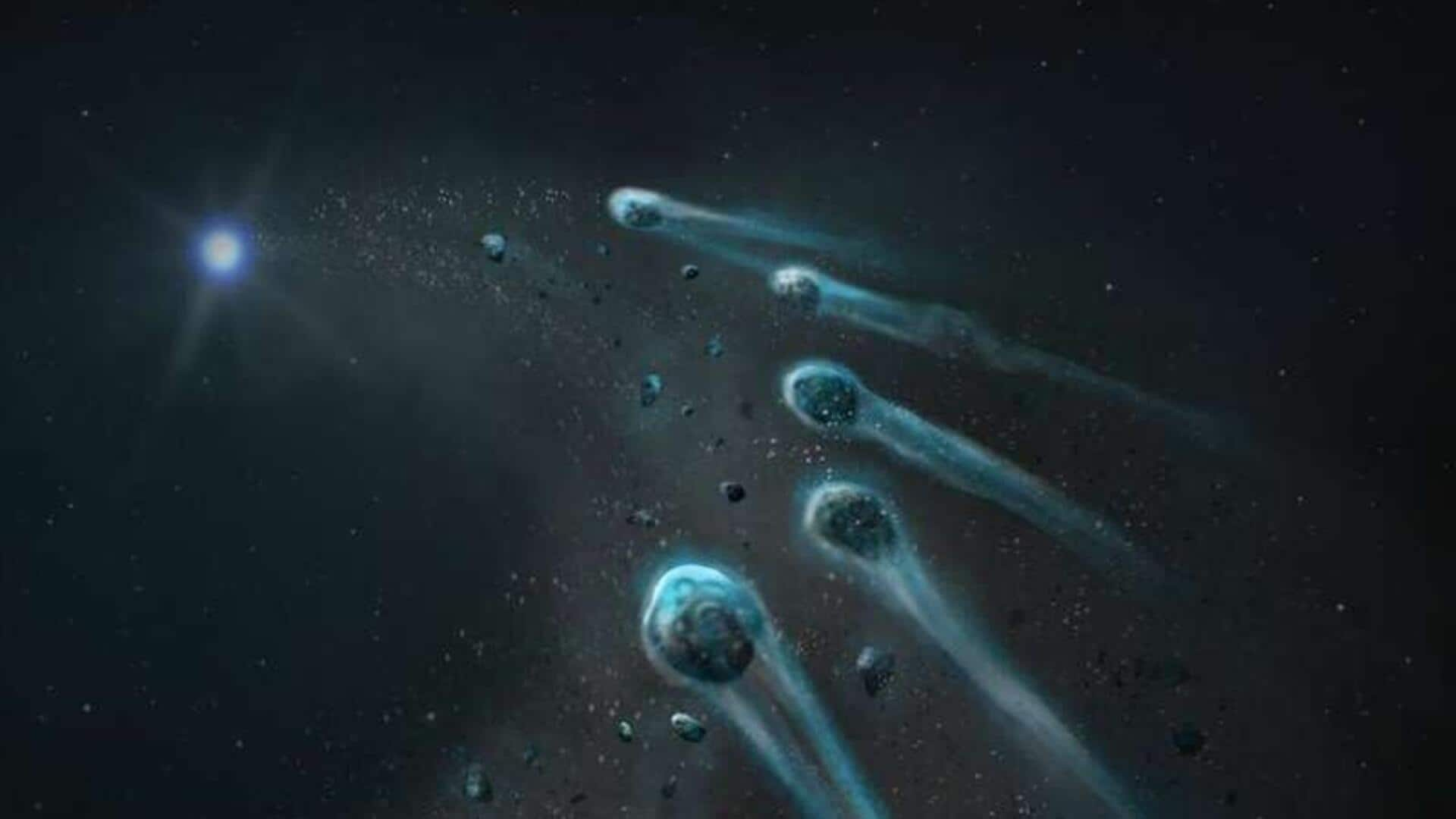Astronomers discover a unique icy planetesimal: What’s so special?

**Astronomers Discover a Unique Icy Planetesimal: What’s So Special?**
*By Dwaipayan Roy | Sep 28, 2025, 03:13 PM*
Astronomers from the University of Warwick have made an extraordinary discovery: a frozen, water-rich planetary fragment being consumed by a white dwarf star. This groundbreaking research was published in the *Monthly Notices of the Royal Astronomical Society* and sheds new light on the composition of planetary bodies beyond our solar system.
Using ultraviolet spectroscopy from the Hubble Space Telescope, the research team analyzed the chemical composition of distant stars. Among several stars studied, one star in particular—WD 1647+375—stood out due to the presence of unusual volatile elements like carbon, nitrogen, sulfur, and oxygen on its surface. This is notable because typical white dwarf atmospheres are primarily composed of hydrogen and helium.
**A Volatile-Rich Atmosphere**
The discovery of this volatile-rich atmosphere was the first clue that WD 1647+375 is different from other white dwarfs. Lead author Snehalata Sahu explained that white dwarfs often bear traces of elements such as calcium and iron from the material they absorb, which usually originate from planets and asteroids that venture too close to the star.
Sahu described white dwarfs as “cosmic crime scenes,” where the elements left behind by accreted planetesimals act as clues, helping researchers decode the nature and origin of these distant objects.
**Evidence of an Icy Origin**
Ultraviolet spectroscopy revealed that the material being absorbed by WD 1647+375 contains the highest nitrogen abundance ever detected in a white dwarf’s debris. This elevated nitrogen level, along with an unexpected surplus of oxygen relative to what is typical for rocky bodies, strongly indicates the object has an icy, water-rich origin.
**Possibly a Comet or Dwarf Planet Fragment**
The data suggests the star is consuming an icy planetesimal, which could be similar to comets like Halley’s or a fragment of a dwarf planet. Professor Boris T. Gansicke, the study’s second author, likened the volatile-rich nature of WD 1647+375 to Kuiper-belt objects in our solar system. This comparison implies the object might be a fragment of a Pluto-like body.
**The Importance of This Discovery**
This is the first confirmed case of a hydrogen-atmosphere white dwarf absorbing an icy, volatile-rich object. However, it remains uncertain whether the planetesimal originated within the original star system or if it was an interstellar comet captured from elsewhere in deep space.
This discovery opens a new window into understanding planetary system compositions beyond our own, providing valuable insight into the building blocks of icy worlds scattered throughout the galaxy.
https://www.newsbytesapp.com/news/science/astronomers-discover-icy-planetesimal-being-devoured-by-white-dwarf-star/story









